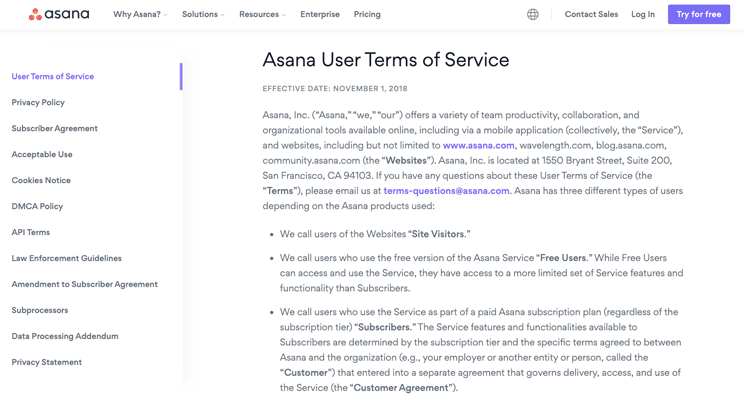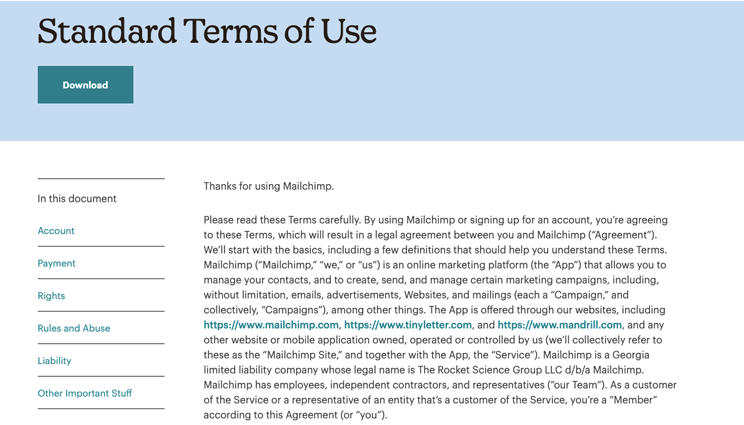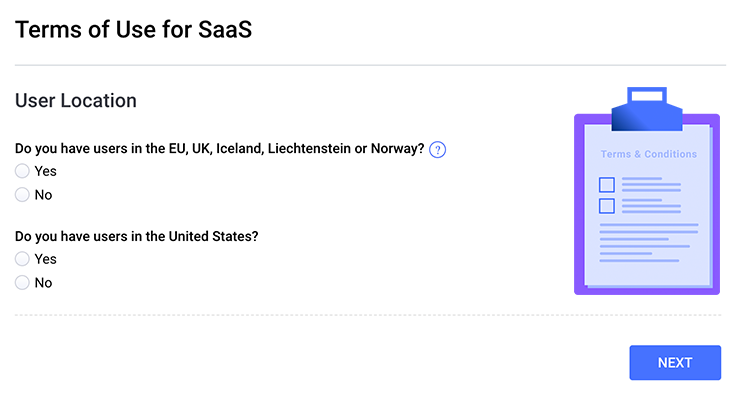
If you offer a software-as-a-service (SaaS) product, you need to develop a SaaS agreement or SaaS contract that lets users know how they can and cannot interact with your service.
A SaaS agreement is another term for terms of use for subscription sites, apps, and services. You need a SaaS agreement to establish rules between your site and its users.
This article explains what a SaaS agreement is, shows examples you can use to get started, and provides a handy checklist to help ensure you address all topics that must be included in your contract.
Use our free SaaS agreement generator to create a comprehensive SaaS agreement in minutes.
A SaaS agreement is a legal contract between an application’s developers and its users. It lays out the terms and conditions that outline how the SaaS application is accessed and used.
This contract usually includes a license agreement, reseller agreement, and subscription agreement, as well as a service-level agreement — which defines the level of service a customer can expect from the SaaS provider, the metrics by which these expectations are monitored, and any remedies that will be carried out if these service levels are not adequately met.
Many SaaS providers have a terms of service or terms and conditions page, which serves as their SaaS agreement. This is usually nothing more than a simple SaaS agreement under different names, as terms and conditions are so versatile.
You need a SaaS agreement if you’re delivering software and data from a central location that your customers access through the internet, rather than providing a local download or installation. This is typically done through a subscription model in which the customer:
Having a SaaS agreement helps you outline rules of download and use when accessing your service, which protects your interests and helps establish documentation in the event of a user dispute.
Let’s look at how other companies lay out the terms and conditions for their services.
You can create agreements like the examples below with our free SaaS agreement generator in just a few minutes.
Asana’s terms of service double as their SaaS agreement:

Note that before diving into the terms themselves, the document lays out a few definitions intended to help the reader comprehend the terms more fully. Most SaaS agreements include a section like this. Asana, for example, specifically defines:
The SaaS agreement also lays out three types of users:
After defining key concepts and terminology, Asana includes a disclaimer alerting readers to the possibility of updates and changes to its Terms.
Including this disclaimer makes it the user’s responsibility to remain aware of the Terms, or if they cannot comply with any modifications, they’re urged to stop using Asana’s Service and Websites.
The document then sets out the Terms and lists a total of 15 sections, covering areas like:
Mailchimp’s Standard Terms of Use contains 40 sections, grouped under six categories, including Account, Payment, Rights, Rules and Abuse, Liability, and Other Important Stuff.

Like Asana, Mailchimp lays out key definitions before delving into the Terms. For example, it defines its “Service” as a collective reference to the App (defined as the online marketing platform provided) and the Mailchimp Site — including www.mailchimp.com, www.tinyletter.com, www.mandrill.com, and any other website or mobile application owned, operated, or controlled by Mailchimp.
A helpful feature on Mailchimp’s Terms page is a sidebar that allows readers to navigate the six overarching sections of the agreement.
While SaaS agreements will vary according to your business and product offering, the following elements are crucial to include in any SaaS contract:
Here’s how you can use Termly’s generator to create comprehensive and customized SaaS agreement.
Step 1: Go to Termly’s terms of use for SaaS generator.
Step 2: Answer a few simple prompts and questions, and go through all of the steps until you reach “Final Details.”

Step 3: Once you’ve filled in everything and you are satisfied with the preview, click “Publish.” You will then be prompted to create an account on Termly so you can save and edit your terms and conditions further.
To create an agreement between your site, service, or app and its users, use our free terms of use generator to publish a custom policy in minutes.

KJ Dearie is a product specialist and privacy consultant for Termly, where she advises small business owners on how to comply with the latest data privacy laws and trends. She's been published in Business News Daily, Omnisend, ITProToday, MarTechExec, and more. More about the author